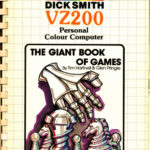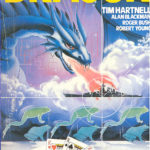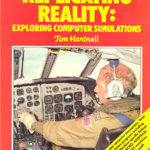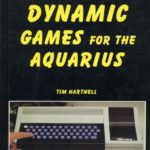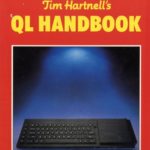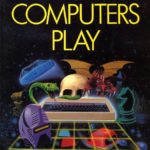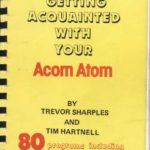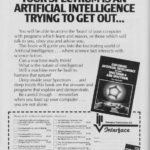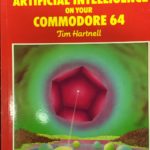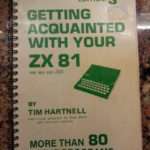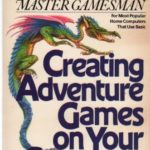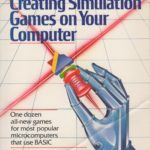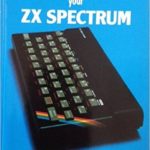
Tim Hartnell an Australian journalist became internationally renowned in the 1980s for his popular books on microcomputing. After working as rural TV newsreader in WA and at the correspondent department for the Victoria Police, Hartnell moved to London in 1979 to work on the “Australasian Express”. He purchased a Sinclair ZX80 on its release in 1980 and found himself more excited by the emerging home computing scene than the promise of news journalism. With Trevor Sharples, Hartnell co-founded the UK based Sinclair Users Club. Placing a three line add in the back of in “Personal Computer Weekly” magazine, he expected to only hear from a few like-minded enthusiasts and was shocked when within six weeks club membership had already reached three thousand. For the club he produced a regular newsletter “Interface” a photocopied ‘zine’ populated with articles and programs that was an essential means of early games distribution. Understanding the importance of the newsletter’s role Hartnell approached a ‘real’ publisher about making it a ‘proper’ magazine but was disgusted by the publisher’s mercenary attitude to the clubs members. Later Hartnell went on to be the editor of “ZX Computing” when in launched in the summer of 1982. In his first editorial he makes an appeal to readers as a community to help maintain the magazines high standard by sending their “best programs, routines, construction projects and discoveries” for which they would be paid. There was no professional community of contributors to draw on but just the micro hobbyist themselves.
Hartnell’s first book “Making the Most of your ZX80” ( 1980) was published by Computer Publications. Drawing on his experiences with the club magazine in 1981 he started the publishing company Interface Publications, with Sue North. The first book Interface published was “49 Explosive Games for the ZX81” edited by Hartnell. It was very much a home-made effort and he ran off its 750 copies on a photocopier. However by June 1983 Interface was a serious publisher with over thirty computing titles many of which were translated into a number of different languages. Whilst Interface grew out the Sinclair community and featured books for the ZX80, ZX81 ZX Spectrum and Sinclair QL it produced titles for many other microcomputers including the BBC Micro, Acorn Atom, Atari, Apple, Commodore 64, Dragon 32, Vic 20, Oric and the Microbee. In addition to Interface Hartnell produced books through other publishers such as Pitman, Corgi, Bantam and Penguin. Sometimes this was for the different international markets but sometimes it was because he wanted to do another adventure book but already had one with one publisher.
Hartnell was a prolific writer and often published his own work under pseudonyms. As a writer and editor he is distinguished by his ability to engage readers with his enthusiasm and wit. His games were designed to help beginners and more sophisticated users understand and grasp programming language and how to write code. They addressed the subject so as to present the programming as a source of enjoyment and as much fun as the promise of gameplay. It was a philosophy that he applied to his authors and Hartnell is renowned for mentoring many young mircocomputing hobbyists to become writers and designers. David Perry creator of “Earthworm Jim” got his professional start as a school boy writing games for Hartnell’s ZX Users Club Magazine. Perry went on to contribute a chapter to Hartnell’s “Giant Book of Computer Games” (1983) and later wrote “Astounding Arcade Games for your Spectrum+ & Spectrum” (1985). Hartnell cultivated many school age authors including Dragon 32 enthusiast Clive Gifford and Peter Shaw (later ‘Troubleshootin Pete’ from “Your Sinclair” magazine). “I like using young people”, Hartnell explained to an “Age” journalist in 1983, “because they can produce stuff that other youngsters can understand…There is no shortage of talent among the young but I am always looking for more.” At the time of the interview he had just recruited 15 new Australian authors including 14 year old Melbourne school boy Ross Symons.
Hartnell returned to Australia in 1983 from where he continued to run Interface publishing. He branched out into the publication of software favouring software systems that encourage experimentation including the “Interface Adventure Shell” (1985) a system for the design of an “infinite number of adventure games” published for the Commodore 64, Apple II and IBMPC. Later reflecting Hartnell’s interest in early AI and Liza Bots, he published the “Interface Expert System Shell” (1986) for the IBM PC. Ross Symons recounts that Hartnell and he also regularly produced tapes that were distributed with the UK magazine “Your 64”.
A self-taught programmer Tim Hartnell made a massive contribution to home computing and early videogames. He died of cancer in 1991, at the age of 40.
Between them, in 1983, Australian run publishers Interface Publications and Melbourne House accounted for 70 percent of the market for computer books in Britain.
References
Sue Denham, ‘Circe: Interview with Tim Hartnell’ [1985] Your Spectrum 72.
Tim Hartnell, ‘Editorial: Welcome. What We Are Trying to Do for You …and How You Can Help Us.’ [1982] ZX Computing 8.
Stephen Hutcheon, ‘Young Authors Show Home Users the Way’ The Age (Melbourne, 19 July 1983) 30.
Interview Ross Symons 2015
Images
- Tim Hartnell (L) with Clive Sinclair
Media
[dg ids=”3629″]
Video

